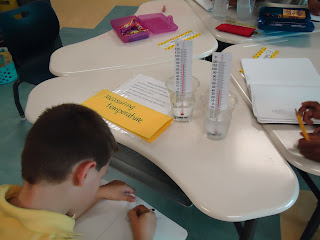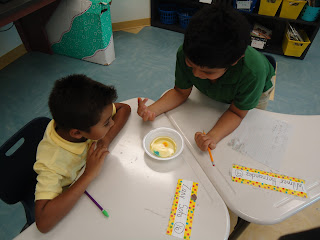Science Stations
Students used measuring tape to measure things that were round like their wrists, their heads, and their arms. They also used rulers to measure crayon boxes and pencils.
We used thermometers to measure two cups of water. One was cold and one was room temperature. The cold water measured 40 degrees and the warm one was 70 degrees.
We used pan balances to measure mass of objects. The marker was heavier than the paper clip. The glue stick was lighter than the scissors.
Students used measuring tapes to measure and compare the size of their heads.
Students used a hand lens to observe tadpoles.They could also observe rocks and feathers using the hand lens or the magnifying box.
At each station students had to record what they observed or measured and draw a picture.
Students thought it was fun!










